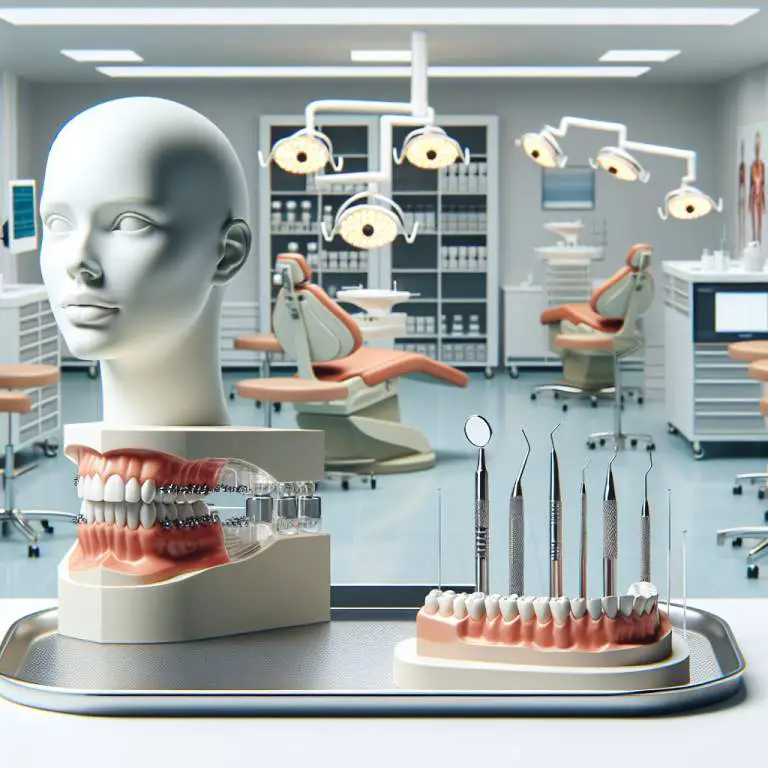How does mewing affect the jawline in comparison to chin exercises?
Mewing, which involves positioning the tongue against the roof of the mouth to potentially reshape the jawline, differs from chin exercises that target muscles for a more defined look. While mewing aims at subtly altering bone structure over time, chin exercises focus on strengthening jaw muscles for immediate definition. People choosing between them should consider that mewing’s effects are more gradual and less proven than the direct muscle engagement offered by chin exercises.

How does mewing work to define the jawline?
Mewing is a technique that involves placing your tongue against the roof of your mouth. This position is supposed to help shape and define your jawline over time. The idea is that by keeping your tongue in this specific spot, you’re using muscles in a way that can make your jaw look stronger.
People who support mewing believe it can change how your face looks by encouraging proper alignment of your teeth and jaws. They say that when you press your tongue up, it helps train the muscles around your mouth and neck. This could lead to a more defined jawline if done regularly.
What are chin exercises and how do they target the jawline?
Chin exercises are specific movements designed to strengthen the muscles around your chin and jawline. These exercises often involve moving your lower jaw forward, holding it in place, and then releasing it. The goal is to target the muscles under your chin and along your jaw, making them stronger and more defined.
By doing these exercises, you might be able to reduce the appearance of a double chin or get a sharper-looking jawline. Chin exercises focus on muscle endurance and strength in areas that don’t usually get much attention during regular workouts or daily activities.
Can mewing and chin exercises be combined for better results?
Yes, combining mewing with chin exercises could potentially give you better results than doing just one of them alone. Mewing works on improving posture and alignment while also engaging some of the muscles around the mouth and neck. On the other hand, chin exercises specifically target strengthening those areas.
When you do both together, you’re not only working on muscle strength but also on maintaining good posture and alignment of your facial features. This dual approach might help speed up changes in how defined or sharp your jawline appears because you’re addressing both muscle tone and structural alignment.
What scientific evidence supports the effectiveness of mewing versus chin exercises?
The scientific evidence supporting the effectiveness of mewing compared to chin exercises is still limited. Some studies suggest that proper tongue posture can have an impact on facial structure over time, especially if started at a young age. However, these studies often emphasize long-term orthodontic treatments rather than short-term cosmetic changes.
For chin exercises, there’s some evidence showing they can improve muscle tone around the neck and lower face area which may contribute to a more defined appearance. Yet, like with mewing, comprehensive research specifically comparing their effectiveness is scarce. Most claims about their benefits come from personal testimonials rather than large-scale scientific studies.
< td>Potential misalignment if done incorrectly; lack of scientific studies proving effectiveness.
< td>Possible strain or injury if exercises are performed improperly; may not address issues related to bone structure.
<
< td>User Friendliness< < < < TD>Suitability for Long-Term Use| Criteria | Mewing | Targeted Chin Exercises | ||
|---|---|---|---|---|
| Definition | A technique that involves flattening the tongue against the roof of the mouth to improve jawline definition over time. | Exercises specifically designed to target the muscles around the chin and jawline for improved definition. | ||
| Primary Focus | Jawline and facial structure improvement through posture correction. | Direct strengthening and toning of chin and jawline muscles. | ||
| Time for Visible Results | Months to years, as it relies on subtle posture changes and potentially bone remodeling. | Weeks to months, depending on consistency and intensity of exercises. | ||
| Examples of Techniques/Exercises | Tongue posture adjustment, ensuring the tongue is consistently pressed against the roof of the mouth. | Jaw clenches, neck curls, ball exercises, and chin lifts. | ||
| Risks or Downsides | ||||
| Easily incorporated into daily routine without needing special equipment or significant time commitment. | Requires time set aside for exercises; may need guidance or equipment (e.g., exercise balls). | |||
| Sustainable as it becomes a natural posture habit. | Variety in exercises can maintain engagement over time; however, motivation may wane without visible progress. |
How long does it take to see results from mewing compared to chin exercises?
Seeing results from mewing can vary greatly among individuals. It often takes several months or even up to a year of consistent practice before noticeable changes in jawline definition are observed. The process is gradual and requires patience and persistence.
In contrast, chin exercises may show results a bit faster, typically within a few months of regular practice. These exercises target the muscles more directly than mewing, which might explain the quicker visibility in changes. However, like mewing, the extent of improvement will depend on consistency and technique.
Are there any risks or side effects associated with mewing and chin exercises?
Mewing, when done correctly, is generally safe but might lead to discomfort or pain if overdone or performed incorrectly. It’s important to follow proper techniques and not apply excessive force to avoid potential issues such as temporomandibular joint (TMJ) problems.
Similarly, chin exercises are safe for most people but can cause strain or injury if not done properly. Overworking the muscles around the jawline could lead to soreness or exacerbate existing TMJ disorders. It’s crucial to listen to your body and adjust the intensity of exercises accordingly.
What are the best practices for incorporating mewing or chin exercises into a daily routine?
To effectively incorporate mewing into your daily routine, start by maintaining good posture throughout the day. Practice proper tongue placement gently against the roof of your mouth whenever you remember. Gradually, it will become more natural and require less conscious effort.
For chin exercises, integrating them into your morning or evening routines can make them easier to remember and stick with. Begin with a few minutes each day and gradually increase as your muscles become stronger. Consistency is key; even short sessions done regularly can lead to improvements over time.
Final Thoughts
Mewing and chin exercises both offer paths toward enhancing jawline definition but require time, consistency, and correct practice for results. While immediate changes should not be expected, dedication over months can yield noticeable improvements.
Risks associated with these methods are minimal when performed correctly but highlight the importance of proper technique. Whether choosing mewing, chin exercises, or a combination of both, incorporating these practices into daily routines in a balanced manner is crucial for achieving desired outcomes safely.







